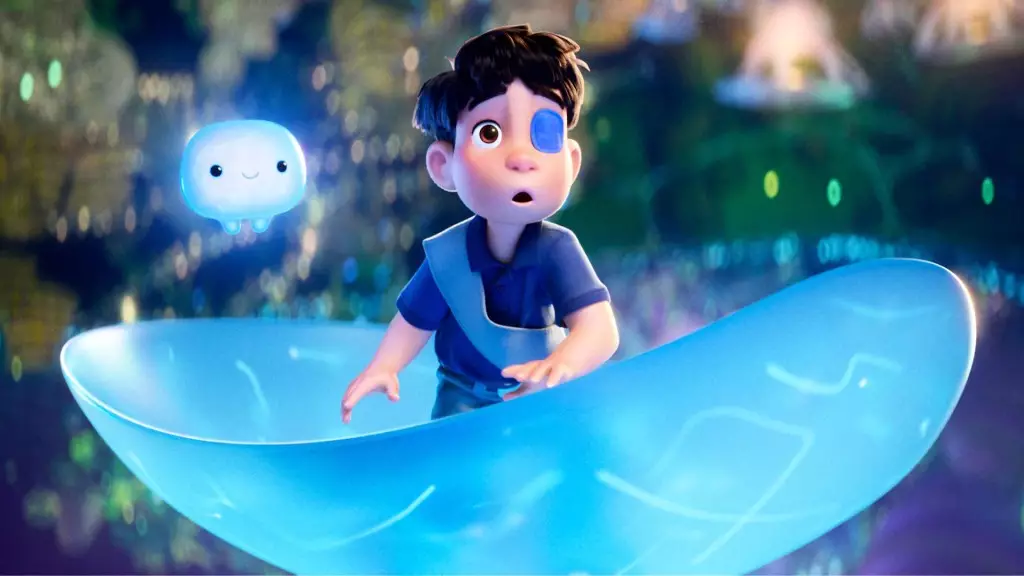The recent tepid reception of Pixar’s latest offering, *Elio*, has posed a significant question about the future of original animated films. Raking in just $21 million during its opening weekend, the film recorded the lowest debut for a Pixar project in history, unveiling what many critics, including Wall Street analysts, perceive as a deeply troubling trend within the animation industry. While a Rotten Tomatoes score of 84% indicates a generally favorable critical reception, the stark contrast between critical acclaim and box office performance signals a growing disconnect between audiences and original content. The stirrings of concern are palpable as the industry grapples with shifting viewer preferences in the wake of the pandemic.
Originals vs. Sequels: A Shortsighted Divide
According to Doug Creutz of TD Cowan, a seismic shift has occurred in the animation landscape, particularly regarding the gap between original films and sequels or derivative works. The COVID-19 pandemic has altered consumer behavior, leading to a pronounced preference for franchise titles—an inclination that has skewed the risk-reward balance for studios. As Creutz astutely notes, the fallout may compel studios to greenlight fewer original animated films, as they cater to this lucrative but myopic trend driven by audience demand.
This emphasis on sequelization diminishes the value of originality in storytelling, creating an overt reliance on established intellectual properties (IPs). The alarming part is that without fresh, inventive stories to captivate audiences, studios will struggle to cultivate new IPs necessary for long-term growth. Disney, highlighted as a central player, is notably vulnerable given its longstanding dependency on animated films to fuel its expansive parks and consumer products ecosystem.
Market Reactions: A Cautionary Overview
Investors have clearly taken notice of these developments, reflected in a tentative response to Disney stock, which experienced fluctuations in response to *Elio*’s disappointing performance. Although shares briefly dipped by 2%, they later rebounded, underscoring a growing apprehension about the company’s future viability amidst production misfires. It becomes evident that the ramifications of a poorly executed film extend beyond the box office; they serve as a harbinger for broader market challenges.
The stakes are much higher in an economy where theme parks, generating an impressive $34 billion in revenue annually, lean heavily on fresh content to invigorate their attractions. As articulated by Dennis Spiegel of International Theme Park Services, the modern theme park experience is cemented to an ever-evolving roster of IPs. Currently, while sequels to beloved films like *Inside Out 2* and *Moana 2* are blockbuster hits, they fail to generate the new experiences that patrons crave at Disney’s mega parks. The transactional nature of animated film success is being severely tested in the current market climate.
The Sobering Numbers: Financial Disparity Between Originals and Sequels
Diving deeper into financial insights reveals an alarming trend; since 2022, original animated titles from Disney and Universal have grossed an average of $412 million. In stark contrast, sequels have dominated with an average of $844 million. Such statistics suggest that not only are audiences pivoting towards familiar narratives, but they are also financially rewarding studios for their lack of creativity. This reinforces a cycle where the financial success of franchises discourages investment into new storytelling avenues—an antithetical stance to the very spirit of creativity.
Even when considering widely successful films like *The Super Mario Bros. Movie*, treated as an original film despite its origins in a video game franchise, the landscape becomes convoluted. It begs the question: to what extent can anything genuinely ‘original’ thrive in a marketplace increasingly reliant on nostalgia and established franchises? As the industry navigates these choppy waters, one can only hope that the artistic essence of storytelling can reclaim its rightful place on the cinematic stage.
In this precarious landscape, the dependency on sequels points to a bleak future for creativity, leaving audiences hopeful but wary that innovation may become a relic of the past.

